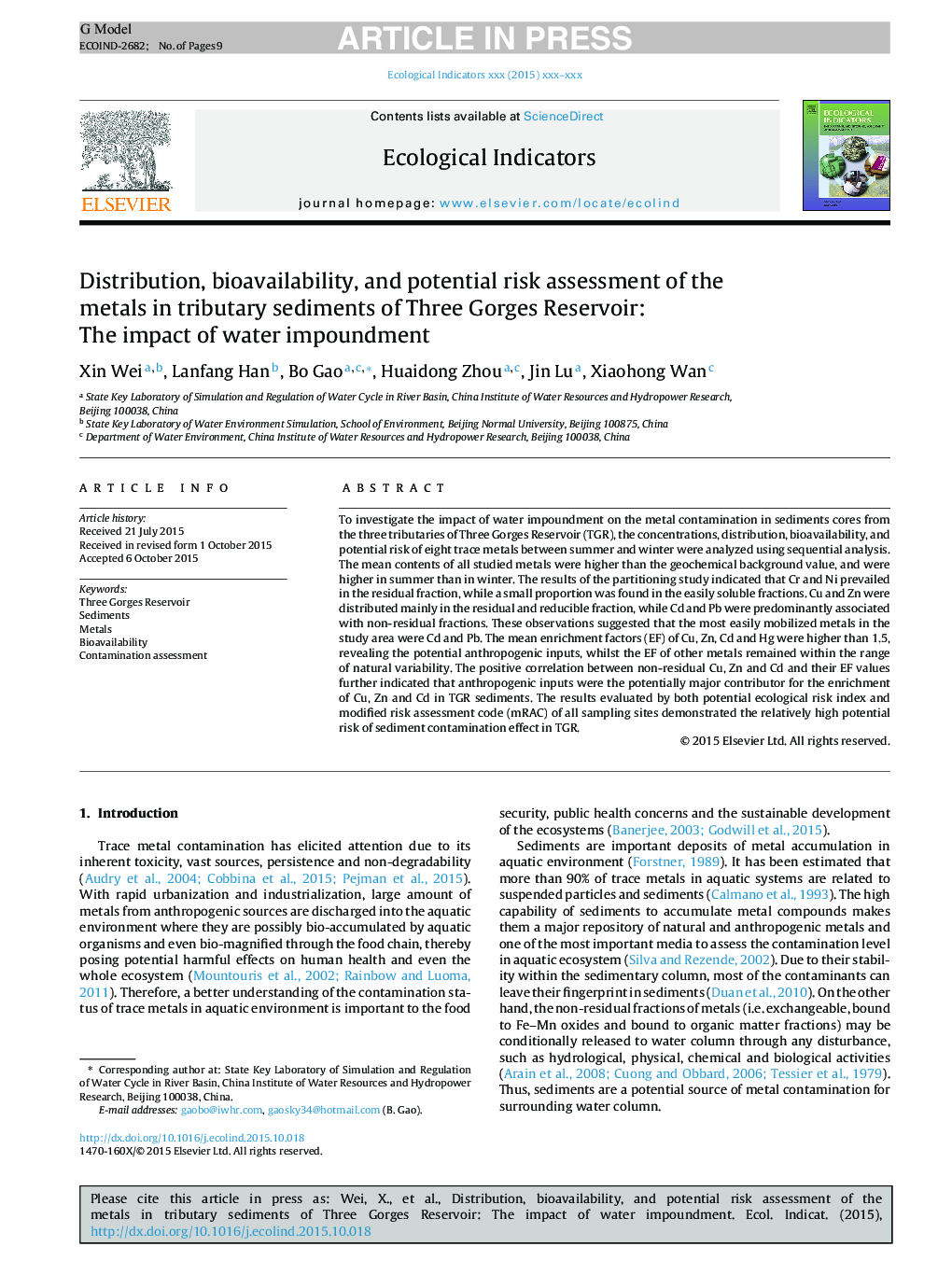| Article ID | Journal | Published Year | Pages | File Type |
|---|---|---|---|---|
| 6293686 | Ecological Indicators | 2016 | 9 Pages |
Abstract
To investigate the impact of water impoundment on the metal contamination in sediments cores from the three tributaries of Three Gorges Reservoir (TGR), the concentrations, distribution, bioavailability, and potential risk of eight trace metals between summer and winter were analyzed using sequential analysis. The mean contents of all studied metals were higher than the geochemical background value, and were higher in summer than in winter. The results of the partitioning study indicated that Cr and Ni prevailed in the residual fraction, while a small proportion was found in the easily soluble fractions. Cu and Zn were distributed mainly in the residual and reducible fraction, while Cd and Pb were predominantly associated with non-residual fractions. These observations suggested that the most easily mobilized metals in the study area were Cd and Pb. The mean enrichment factors (EF) of Cu, Zn, Cd and Hg were higher than 1.5, revealing the potential anthropogenic inputs, whilst the EF of other metals remained within the range of natural variability. The positive correlation between non-residual Cu, Zn and Cd and their EF values further indicated that anthropogenic inputs were the potentially major contributor for the enrichment of Cu, Zn and Cd in TGR sediments. The results evaluated by both potential ecological risk index and modified risk assessment code (mRAC) of all sampling sites demonstrated the relatively high potential risk of sediment contamination effect in TGR.
Related Topics
Life Sciences
Agricultural and Biological Sciences
Ecology, Evolution, Behavior and Systematics
Authors
Xin Wei, Lanfang Han, Bo Gao, Huaidong Zhou, Jin Lu, Xiaohong Wan,
